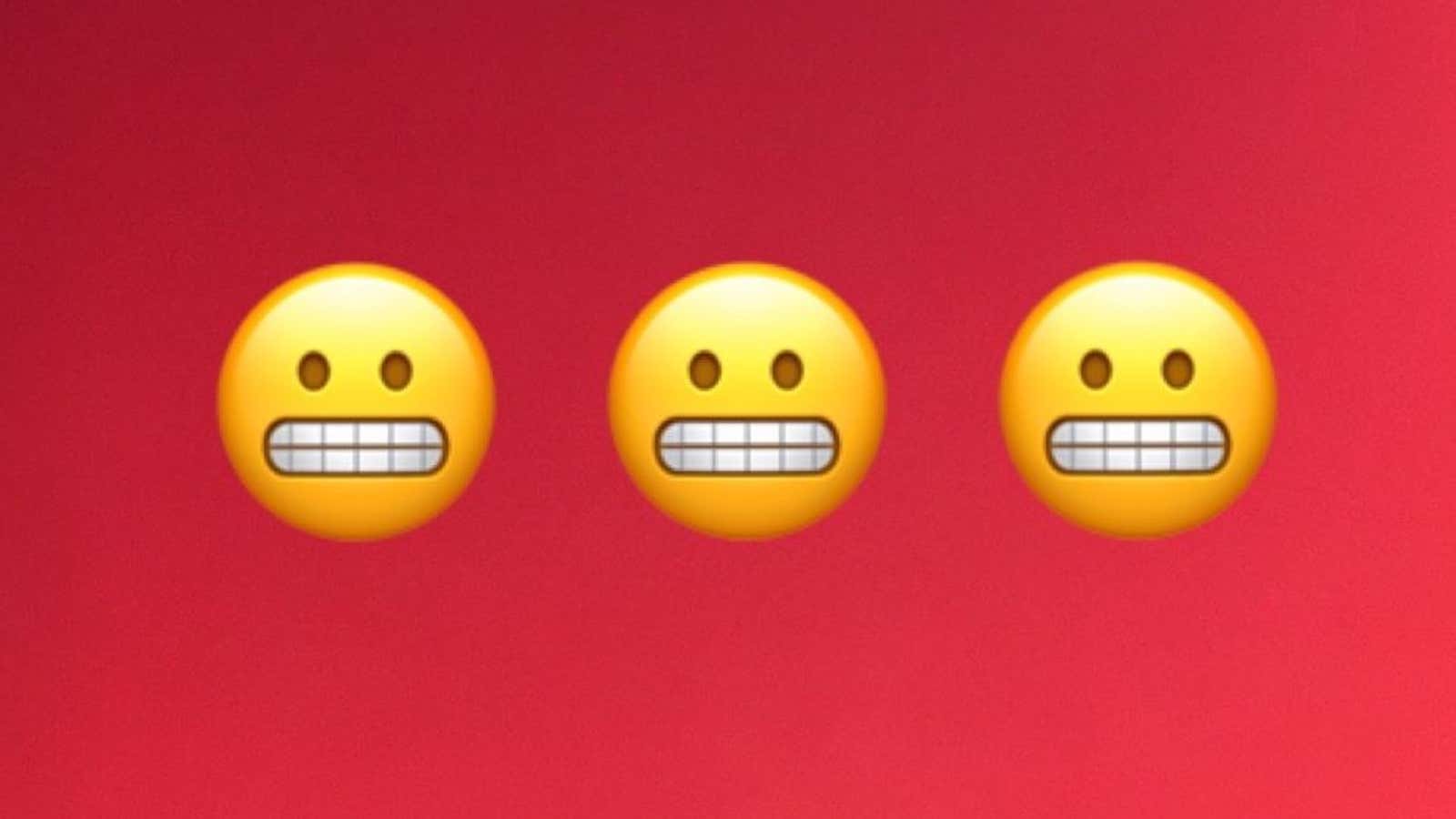Emoji are wonderful way for us to communicate all that might otherwise go unsaid: brewing rage, feeling as busy as a bumblebee, a desire for hamburgers, sexual frustration. But there is one emoji so universally applicable that it stands above the rest: the wide-eyed, grimacing emoji 😬.

According to Emojipedia, the grimacing emoji—approved as part of Unicode 6.1 in 2012 and added to Emoji 1.0 in 2015—is “generally used when a mistake or unfavorable situation has arisen—aka ‘eek’”! But this explanation, while accurate, underestimates the versatility, and sheer human poetry, contained in a simple cartoon grimace. In these awkward, uncomfortable times, we all feel like gritting our teeth in a straight line sometimes. Here are just a few reasons why the grimacing emoji is the best.
It lets us acknowledge how anxious we are
From awkwardly misspelt Slack messages to meetings you’re unprepared to lead, and performance reviews you’d rather skip to assignments you should’ve completed yesterday, the grimace emoji allows us to succinctly acknowledge the stress and anxiety we all feel every day—in a low-key way. As my colleague Sarah said, “It’s a way to say ‘Oh god, I hope we don’t all die today,'” and laugh at our own neuroticism.
In this way, the grimace emoji also works to help us be a little more authentic with each other. In professional and personal communication, the pressure to veil anxiety, stress, and grumpiness with fake enthusiasm is paramount—especially for women. But as Meredith Bennett-Smith recently wrote for Quartz, “Research shows that forcing workers to appear more pleasant and more cheerful than they actually feel can lead to a whole host of negative consequences—from emotional exhaustion to withdrawal.” A simple 😬 may not seem like much, but it’s a small way to dispense with unnecessary facades.
It helps people navigate the awkwardness of asking for favors
All of us have to ask for things sometimes—especially at work. But we don’t want to seem demanding, entitled, or oblivious. Those of us on the receiving end of the request may be willing to do the favor itself, but would rather not do it with false enthusiasm.
Enter the gift of the 😬. Including the emoji after an ask—or in response to it—is a light-hearted way to acknowledge the burden being imposed. That’s humbling for the favor-requester, and gratifying for the favor-recipient, as it shows respect for the time and effort involved.
It makes it easier to give honest feedback
Tough love can be useful to receive—but scary to give. Worried we’ll offend our friends or seem mean, we too often hold back truths that others might not want to hear. But if your colleague is taking way too long to finish an assignment, your overly dramatic friend needs a reality check, or if you simply want to declare your love for The Bachelor to a Twitter feed full of high-brow writers, nothing says “sorry not sorry” like 😬. It takes the edge off honesty with a dose of playfulness and self-deprecation.
Said simply, we are all the awkward, anxious, shameless grimace emoji. It’s time we start admitting it.
